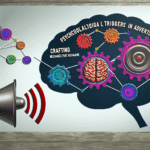
Introduction: Bridging the Gap
In today’s fast-paced educational landscape, empowering parents is more crucial than ever. Schools, educators, and parents all play vital roles in a child’s academic journey, yet communication between these stakeholders can often falter. Remember the last time you felt out of the loop regarding your child’s academic performance or social challenges? The stakes are high; effective communication can lead to improved student outcomes, enhanced relationships, and a more supportive learning environment. This article, "Empowering Parents: Tools for Proactive Communication with Teachers," delves into effective strategies, tools, and mindsets that can facilitate a transparent dialogue between parents and teachers.
The Need for Proactive Communication
When it comes to education, the importance of proactive communication cannot be overstated. Studies reveal that positive parent-teacher interactions correlate with stronger academic performance and better social behavior among students. Moreover, communication acts as a crucial bridge that fosters trust, aligns educational goals, and ensures that challenges are addressed timely.
Case Study: A School’s Turnaround
At Riverside Elementary, teachers noticed a significant decline in student engagement. To combat this, they developed a "Communication Initiative," designed to openly engage with parents. This involved setting up a monthly newsletter that included upcoming events, student achievements, and spotlight sections on how parents could support learning at home. As a result, parent participation in school activities increased by 40%, and student engagement rejuvenated—illustrating the power of proactive communication.
Tools for Proactive Communication
1. Digital Platforms and Apps
In our tech-savvy world, leveraging digital tools can significantly enhance communication:
ClassDojo: This platform allows teachers to share updates, photos, and videos of classroom activities instantly. Parents can engage in real-time, which fosters a supportive environment.
Remind: This messaging app provides a straightforward way for teachers and parents to communicate without requiring phone numbers. It’s an excellent tool for quick announcements or reminders.
- Google Classroom: This can be used to share assignments, resources, and feedback, allowing parents to stay updated on their child’s progress.
2. Regular Check-ins
Establishing a routine for communication can normalize interactions:
Scheduled Meetings: Regularly scheduled conferences can pave the way for structured discussions about a child’s strengths and weaknesses.
- Progress Reports: Sending home quarterly or bi-monthly reports allows parents to gain insight into their child’s academic journey.
3. Workshops and Open Houses
Create opportunities for parents to actively engage with the school environment:
Workshops: Offer sessions on topics like “Supporting Homework at Home” or “Understanding the Curriculum.” These workshops can empower parents to be collaborators in their child’s education.
- Open Houses: Host open houses to welcome parents into the classroom, giving them a glimpse of daily activities and expectations.
4. Feedback Mechanisms
Encouraging dialogue requires effective feedback tools:
Surveys: Utilizing simple surveys can provide teachers with valuable insights into how parents feel about communication and engagement.
- Suggestion Boxes: These boxes enable parents to share concerns or ideas anonymously, which might lead to honest feedback.
Chart: Communication Preferences among Parents
| Medium | Effectiveness (%) | Parent Preference (%) |
|---|---|---|
| Face-to-Face Meetings | 80 | 60 |
| Emails | 70 | 15 |
| Messaging Apps | 90 | 25 |
| Newsletters | 60 | 10 |
The Psychology Behind Proactive Communication
Understanding the emotional landscape of parents can deepen communication efforts:
The Role of Trust
Building trust is paramount. When parents feel that teachers care about their child’s overall well-being, they are more likely to engage in meaningful dialogue.
Empowerment Through Information
Knowledge is power. When parents know what to expect from their child’s educational experience, they’re better equipped to provide support at home. This, in turn, can uplift student performance.
Case Study: A Community Experience
At Maplewood High, a survey revealed that parents were often unsure of how to support their children with homework. The school organized a series of events where parents could learn effective study techniques directly from teachers, demonstrating how to work through complex assignments with their children. This initiative not only educated parents but also built trust and a collaborative atmosphere.
Overcoming Barriers to Communication
While the advantages of proactive communication are clear, several challenges can impede progress:
Cultural and Language Differences
In diverse communities, language barriers can lead to misunderstandings. Offering translation services and multilingual resources can include all parents effectively.
Time Constraints
Busy schedules can hinder communication. Schools can mitigate this by offering flexible meeting times or online conferencing options.
Case Study: Addressing Barriers
A suburban high school implemented a "Family Cultural Night," where they invited parents to share their languages and cultures. It fostered a sense of community and allowed parents to feel more comfortable engaging with teachers. The event led to heightened participation in school functions and a notable decrease in communication gaps.
Tools to Overcome Barriers
Language Apps: Apps like Google Translate can help bridge language divides during meetings.
- Flexible Timing: Offering varied time slots for parent-teacher conferences can accommodate more parents’ schedules.
The Importance of Positive Language
Using positive language is a critical component of effective communication:
Fostering a Growth Mindset
Communicating challenges with a focus on growth can motivate parents to support their children’s learning. Instead of stating what their child did incorrectly, teachers can emphasize areas for development.
Case Study: Language Transformation
At Crestview Academy, a teacher revamped their communication style by using positive framing. For instance, instead of saying, "Your child struggles with mathematics," the teacher would say, "Your child is developing their problem-solving skills and would benefit from additional practice." This shift led to increased parent involvement and a more collaborative atmosphere.
Final Thoughts: The Call to Action
The tools and strategies outlined in "Empowering Parents: Tools for Proactive Communication with Teachers" can transform relationships between parents and educators. By nurturing trust, utilizing digital platforms, and welcoming honest feedback, schools can become a collaborative space where everyone thrives.
As you reflect on this article, consider what steps you can take to engage more proactively in your child’s education. Whether it’s sending a quick message to a teacher, attending school events, or simply asking your child about their day, every effort counts.
FAQs
1. What are the best tools for parent-teacher communication?
Effective tools include digital platforms like ClassDojo, Remind, and Google Classroom, which facilitate easy interaction.
2. How often should I communicate with my child’s teacher?
At a minimum, regular communication should occur during report card periods and teacher conferences. However, proactive communication can happen as often as necessary for any concerns.
3. How can I effectively support homework without doing it for my child?
Approach homework with an attitude of curiosity, ask guiding questions, and encourage independence rather than providing direct answers.
4. What should I do if I disagree with a teacher’s assessment of my child?
Initiate an open dialogue with the teacher, presenting your concerns constructively. Collaboration is key to finding a solution.
5. How can I build a relationship with my child’s teacher?
Start with consistent communication, attend school events, and respect their expertise. Showing appreciation for their efforts helps build rapport.
Communication is the lifeblood of educational success; when parents and teachers work together, every child benefits. The tools for empowering parents to take an active role in their child’s education are essential, not just for academic achievement but for what it means to feel part of a loving and supportive community. Let’s seize these opportunities together and foster an environment where our children can thrive!
















